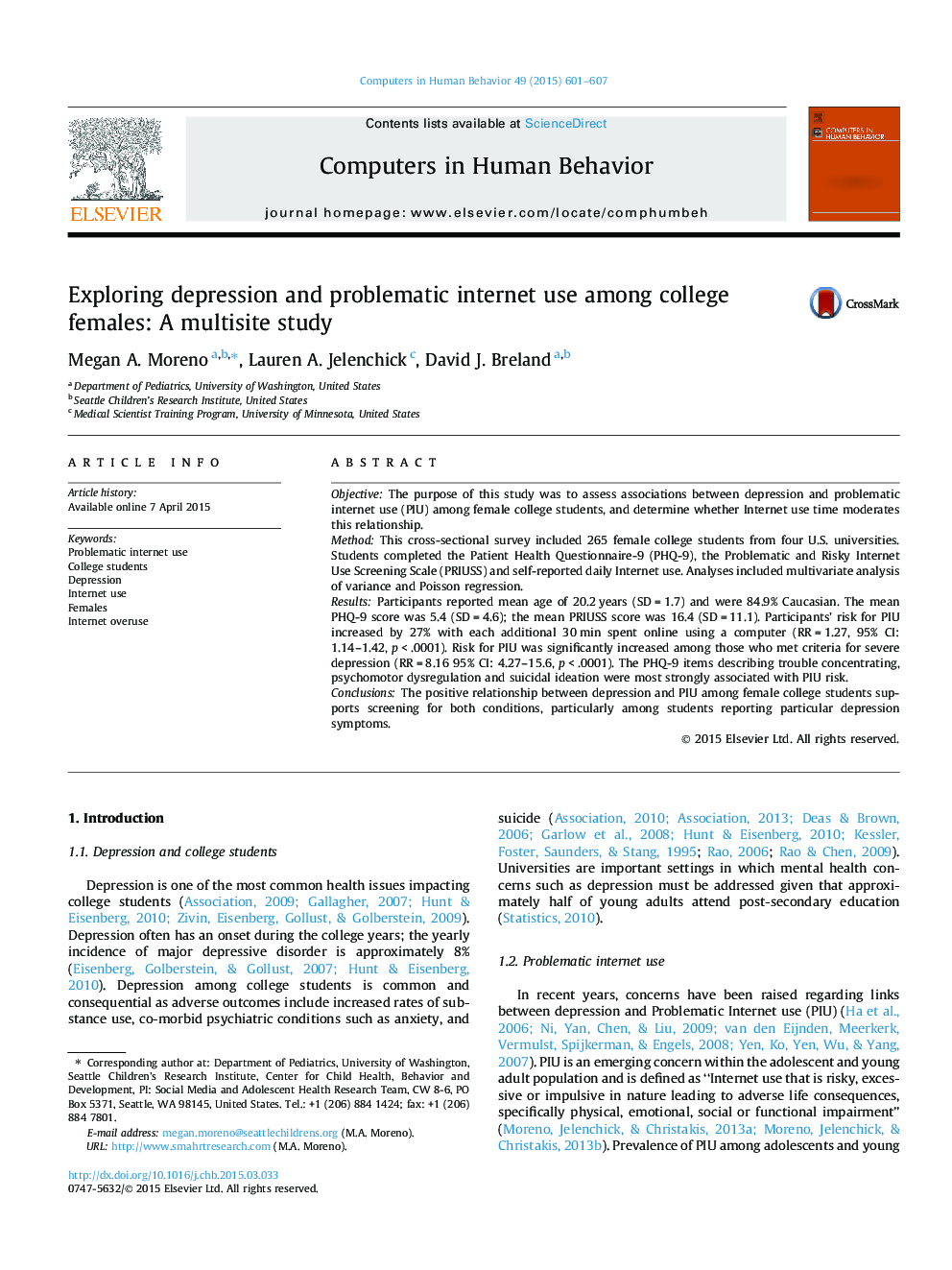| Article ID | Journal | Published Year | Pages | File Type |
|---|---|---|---|---|
| 350358 | Computers in Human Behavior | 2015 | 7 Pages |
•We examined depression, problematic internet use (PIU) and internet use time.•Participants’ risk for PIU increased by 27% with each additional 30 min spent online.•PIU risk was greatly increased among those who met criteria for severe depression.•Symptoms of trouble concentrating and suicidal ideation were strongly associated with PIU.•College health centers should consider dual screening for depression and PIU.
ObjectiveThe purpose of this study was to assess associations between depression and problematic internet use (PIU) among female college students, and determine whether Internet use time moderates this relationship.MethodThis cross-sectional survey included 265 female college students from four U.S. universities. Students completed the Patient Health Questionnaire-9 (PHQ-9), the Problematic and Risky Internet Use Screening Scale (PRIUSS) and self-reported daily Internet use. Analyses included multivariate analysis of variance and Poisson regression.ResultsParticipants reported mean age of 20.2 years (SD = 1.7) and were 84.9% Caucasian. The mean PHQ-9 score was 5.4 (SD = 4.6); the mean PRIUSS score was 16.4 (SD = 11.1). Participants’ risk for PIU increased by 27% with each additional 30 min spent online using a computer (RR = 1.27, 95% CI: 1.14–1.42, p < .0001). Risk for PIU was significantly increased among those who met criteria for severe depression (RR = 8.16 95% CI: 4.27–15.6, p < .0001). The PHQ-9 items describing trouble concentrating, psychomotor dysregulation and suicidal ideation were most strongly associated with PIU risk.ConclusionsThe positive relationship between depression and PIU among female college students supports screening for both conditions, particularly among students reporting particular depression symptoms.
Graphical abstractFigure optionsDownload full-size imageDownload as PowerPoint slide
